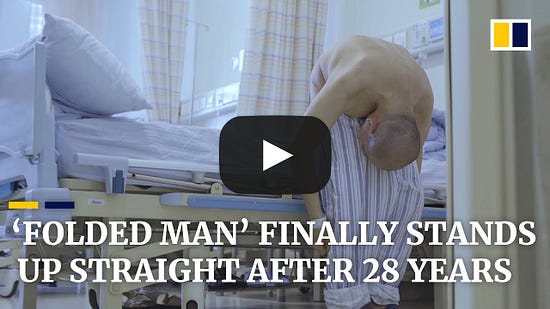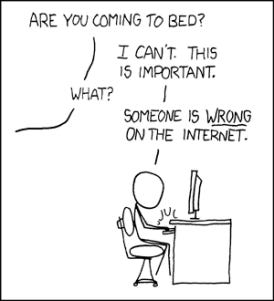The NagerBazar Newsletter where I share something useful, something productive and something entertaining.
Today's uncommon topic is Epistemic humility. Epistemic humility is the recognition that we do not know everything and that our beliefs may be fallible. It involves an openness to new information and the willingness to revise our beliefs when confronted with evidence that challenges them. Here are a few real-life examples to illustrate this concept: Medical diagnoses: Imagine you have been experiencing chronic headaches and visit a doctor who diagnoses you with a certain condition. If you are epistemically humble, you would understand that the diagnosis is not necessarily definitive and seek second opinions or further testing before accepting it as absolute truth. Political beliefs: Let's say you strongly believe in a particular political ideology, but then you read a well-researched article that presents evidence that challenges your beliefs. If you are epistemically humble, you would be willing to consider the new information and possibly revise your beliefs, rather than dismissing it outright. Scientific research: Scientific research is built on the concept of epistemic humility. Researchers conduct experiments to test their hypotheses, and if the data does not support their initial beliefs, they revise their theories and continue testing. This process of constant revision and openness to new information is what makes scientific progress possible. In all of these examples, epistemic humility involves recognizing the limits of our own knowledge and being open to the possibility that we may be wrong. It allows us to continue learning and growing throughout our lives. **One Video I Enjoyed**A man suffered from a form of ankylosing spondylitis so severe that his upper body folded onto his thighs. Three parts of his body were 'connected' – his chin to his chest, his breastbone to his pubic bone, and his face to his thigh bone. After undergoing four operations at Shenzhen University General Hospital, in which his bones were literally broken and reconstructed, he finally stood straight – after 28 years.  **Two Tweets I Enjoyed and Liked**15 Powerful affirmations that will reprogram your subconscious mind and unleash its power by @growthhub_ https://twitter.com/growthhub_/status/1630596381835505665?t=1QM1l6hOek0acPorCoRW6g&s=19 How to write emails like a boss (according to an award-winning author): by Alex Brogan ( ) https://twitter.com/_alexbrogan/status/1630572348632858624?t=XfCkgx4PFvh-NdiTeRMyZg&s=19 **Three New Websites I Enjoyed and Liked**What The Fuck Should I Make For Dinner? http://whatthefuckshouldimakefordinner.com/ How Many People Are In Space Right Now? https://www.howmanypeopleareinspacerightnow.com/ They are masters at tracking down the exact clothes actors wear in tv shows. AND they often show a similar cheaper option if your budget is not the same as millionaires. **Three Quotes and Phrases I Liked**
**Two Write Ups I Enjoyed and Liked**The End of Writing https://ia.net/topics/the-end-of-writing-ia-on-ai?ref=refind 12 Concentration Exercises from 1918 https://www.artofmanliness.com/character/behavior/12-concentration-exercises-from-1918/ **The One Photo**Quảng Đức was protesting the persecution of Buddhists by the South Vietnamese government led by Ngô Đình Diệm, a staunch Roman Catholic. Photographs of his self-immolation circulated around the world, drawing attention to the policies of the Diệm government. Thanks Xoxo © 2023 Aritra Sarkar |
Blog Archive
-
▼
2023
(33)
-
▼
July
(6)
- Grandfather Paradox/Jim Simons Trading Strategy
- Shikata ga nai/Startup Terms/Stone art
- Buridan's ass/Cognitive Biases Explained/Wikipedia...
- Epistemic humility/Standing of Folded Man/ The Bur...
- Law of Triviality/Writing Effective Emails/Time Sa...
- Gambler's Fallacy/Writing Secrets/66% returns on i...
-
▼
July
(6)
Popular Posts
-
From:https://unsplash.com/@slangston Its been a long time when I last posted anything online in a blogging platform. And for last few days I...
-
Did We Know This About Indian Highways Welcome to issue #02 We have a natural instinct of cursing those who made our roads or highways...
-
North Korea and the facts about this weird country Welcome to issue #03 By Kremlin.ru, CC BY 4.0, https://commons.wikimedia.org/w/index.php...
Contact Us or Send Me The Broken Links
Copyright © 2014 • www.NagerBazar.com
Designed By Blogtipsntricks. In Association With wpguidance.com and techdale.org








0 Comments:
Post a Comment
Note: only a member of this blog may post a comment.